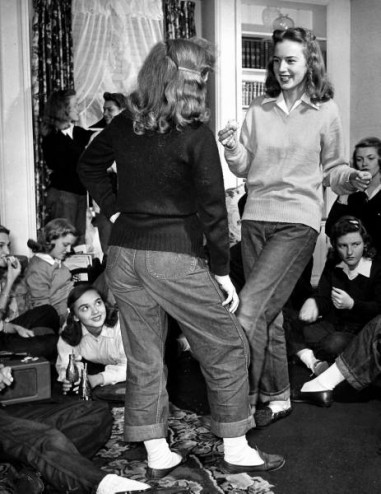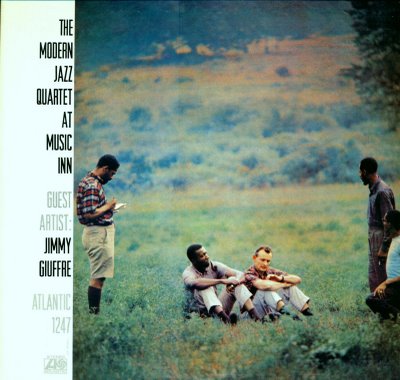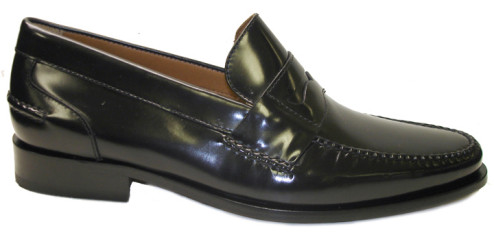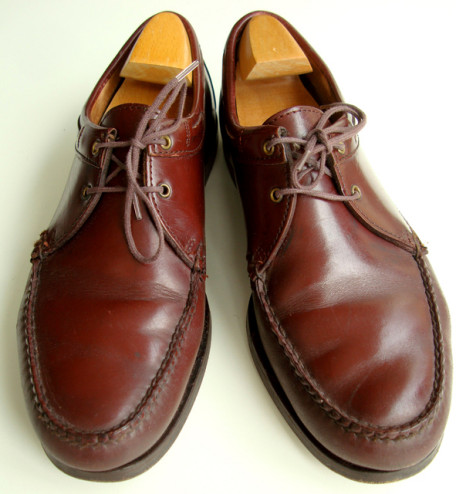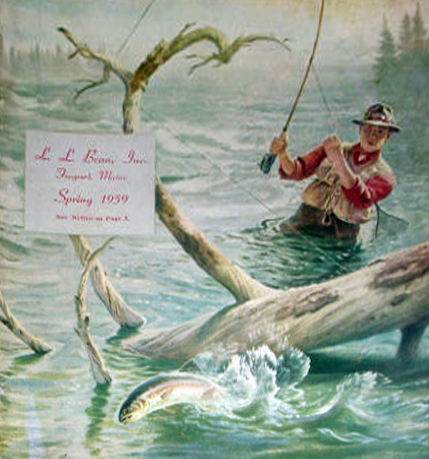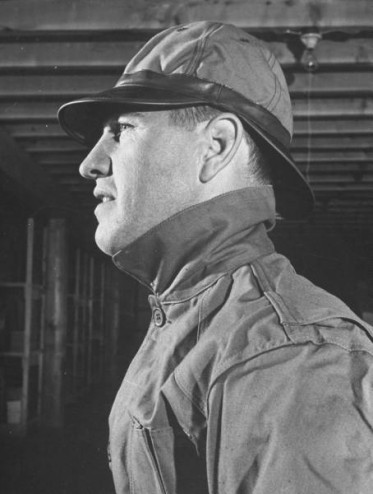When it comes to penny loafers, as the name of this site suggests, I am mostly a Bass Weejun fan. With beefroll loafer there are more styles and many different makers who get their own look, but, to my mind at least, nobody ever gets that deep vamp look that Bass has, creating a highwalled side to … [Read more...] about What’s The Weejun Buying On Ebay? Dexter Penny Loafers!
Archives for March 2009
Weejun Wearer of the Week – 1943 Bachelor-ettes
Weejun Wearer of the Week Well, no specific Weejun wearing in this week's choice (maybe the girl's foot down on the bottom right) but you can sense the presence, can't you? … [Read more...] about Weejun Wearer of the Week – 1943 Bachelor-ettes
The Look: Images and Styles That Have Influenced The Weejun – MJQ & Jimmy Giuffre
Back in the early 1981 there were very few jazz LPs from the golden age of modern jazz in print. As such we relied on the vagaries of the record companies to reissue random titles. There were almost no concerted themed reissues. Those that were most interesting often seemed to be from France or … [Read more...] about The Look: Images and Styles That Have Influenced The Weejun – MJQ & Jimmy Giuffre
The Devil Wears… Bass Weejuns?
The 'New' Weejun Dover. Dump It Off the White Cliffs, I Say. This blog is supposed to be a positive celebration of Americana but this week there's been a bit of a negative tone about where some of the classic US brands are today. It's not really my place to have a dig at these companies. In … [Read more...] about The Devil Wears… Bass Weejuns?
Shoes I Have Loved: Vintage Bass Weejuns 2 Tie Moccasins
Back in 2000 I was sent on a mission to LA on behalf of well known TV company to talk to Warner Bros about why they didn't really need to buy into Warner's own version of the internet, called Entertaindom, instead of using the real internet for free. Strange but true. Anyway the point is that I got … [Read more...] about Shoes I Have Loved: Vintage Bass Weejuns 2 Tie Moccasins
What’s Wrong Old Bean? LL Ain’t What It Used To Be
Yesterday's post of some wonderful vintage LL Bean hunting gear from a LIFE magazine feature in 1941, led to The Weejun being followed on Twitter by LL Bean's Head of PR. This set to me to thinking about bringing forward a piece I've been planning since first starting The Weejun, and that is the … [Read more...] about What’s Wrong Old Bean? LL Ain’t What It Used To Be
L.L Bean – Hunting Gear from 1941
Whatever you think of the mumsy style of LL Bean these days and the self-butchering of their own heritage, once upon a time it was about as hard core as you could get if you wanted a spot of upland hunting. This photo series appeared in LIFE magazine in 1941. Some elements are still available in … [Read more...] about L.L Bean – Hunting Gear from 1941
What’s The Weejun Buying on Ebay? Florsheim Imperials!
Last night I lost an auction for a pair of vintage Weejuns that I'd been watching for ten days. The seller had agreed to ship to the UK, which was very nice of him, but at the last second when my bid went in I got an error message from Ebay saying seller hadn't selected 'ship' worldwide. Too late … [Read more...] about What’s The Weejun Buying on Ebay? Florsheim Imperials!

